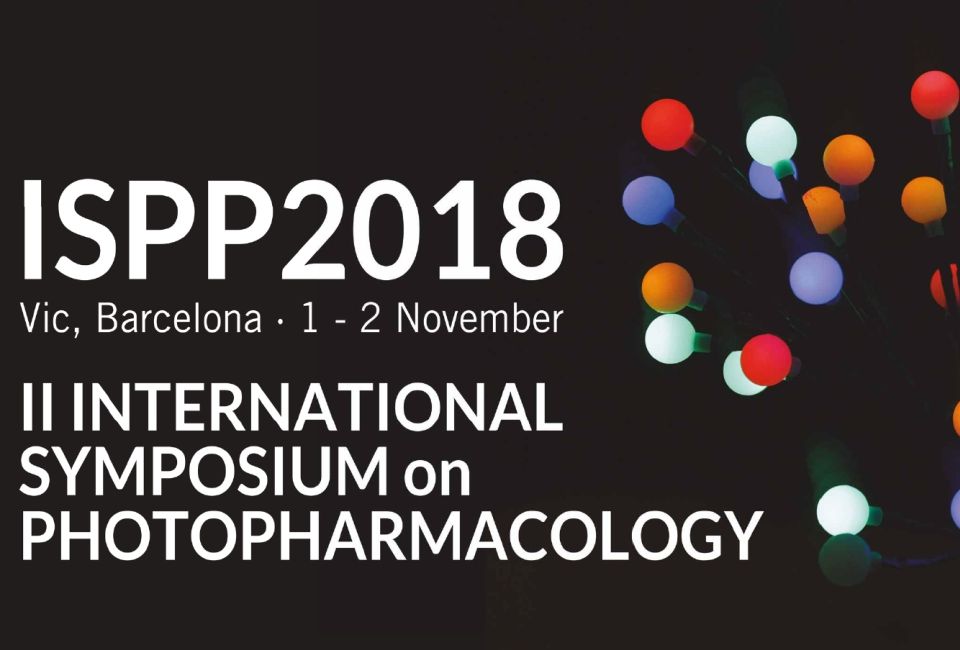
The leading international figures in photopharmacology meet at a symposium in Vic
Introducing a drug into the human body that remains inactive inside it and only acts when, where and how we tell it to will be possible within a few years, with the application of photopharmacology, an emerging branch of science that uses light to control the activity of medication. The world's leading researchers and experts in this field will meet at the second international photopharmacology symposium in Vic on 1 and 2 November.
The convention is being organised jointly by the University of Vic - Central University of Catalonia (UVic-UCC), the Institute for Bioengineering of Catalonia (IBEC) and the Institute for Advanced Chemistry of Catalonia - Spanish National Research Council (IQAC-CSIC). More than 120 people, the vast majority of whom come from countries other than Spain, will be attending the event, which will take place in the Torre dels Frares building at the UVic.
The symposium will include around twenty lectures, three blocks of short presentations and two poster sessions. The speakers include Ben Feringa, of the University of Groningen (Netherlands), who was awarded the Nobel Prize in Chemistry in 2016 for the design and synthesis of molecular machines - an award he shared with Jean-Pierre Sauvage and Fraser Stoddart. Among others, the scheduled lectures include those by Edith C. Glazer of the University of Kentucky, from the United States, who is working on the development of complex metals such as possible photoactive drugs, and by Austria's Dirk Trauner, of the University New York, focusing on the application of photopharmacology in neurobiology. One of the main achievements of her team, working with Richard Kramer and Ehud Isacoff, has been to restore sight in blind animals, using drugs that respond to visible light as molecular prostheses. Francisco Ciruela, a researcher at the Bellvitge Institute for Biomedical Research (IDIBELL-UB) will also be participating.
Fostering cooperation and coordinating strategies
The symposium will be a meeting and debating forum for leading researchers and figures in photopharmacology. In a field of research as new as this one, the organisers are aiming to foster synergies and cooperation between centres and researchers, and establish a debate to delineate problems, define solutions, align strategies and consider future developments. Within the debate, they also aim to include points of view from professionals from areas of influence within photopharmacology, such as doctors, representatives of industrial sectors linked to light (photonics, spectroscopy and optics), molecular therapy (the pharmaceutical industry, biotechnology and medical chemistry) and medical devices.
The meeting follows on from the first photopharmacology symposium, which took place at the Medical Centre of the University of Groningen (in the Netherlands) in February 2017, and was organised by Ben Feringa Research Group. The topics covered at that event ranged from photochemistry and chemical synthesis, to the restoration of vision and brain research. At this second symposium, the organisers are aiming to highlight the innovative therapies based on light that are already being developed, and the research tools that are being developed in this context.
What is photopharmacology?
Photopharmacology is based on administering photosensitive compounds as drugs, which are only activated and take effect in combination with light. This specific characteristic provides a high level of control over the administration of medications and therapies, since it means that the specific point of the body where it is applied and the duration of the application can be decided. This precision and location means that as a technique, photopharmacological treatments are not invasive, and can achieve optimum results with minimal secondary effects.
Although its history dates back to the 1960s, photopharmacology has primarily developed over the last ten years. During this period, a significant critical mass of researchers has been created in research centres and universities around the world that focus on the field from various perspectives. It is a multifaceted science, which includes biology, pharmacology, physics, chemistry, engineering and medicine. Its applications are also extremely wide-ranging: it may be therapeutically useful in a wide variety of medical fields, within which neurosciences and cardiology are particularly important. Some applications that are being studied could also provide substantial improvements in pathologies such as diabetes and chronic pain. Photopharmacology can also be used as a research tool, and can be combined with other technologies, such as materials nanotechnology.